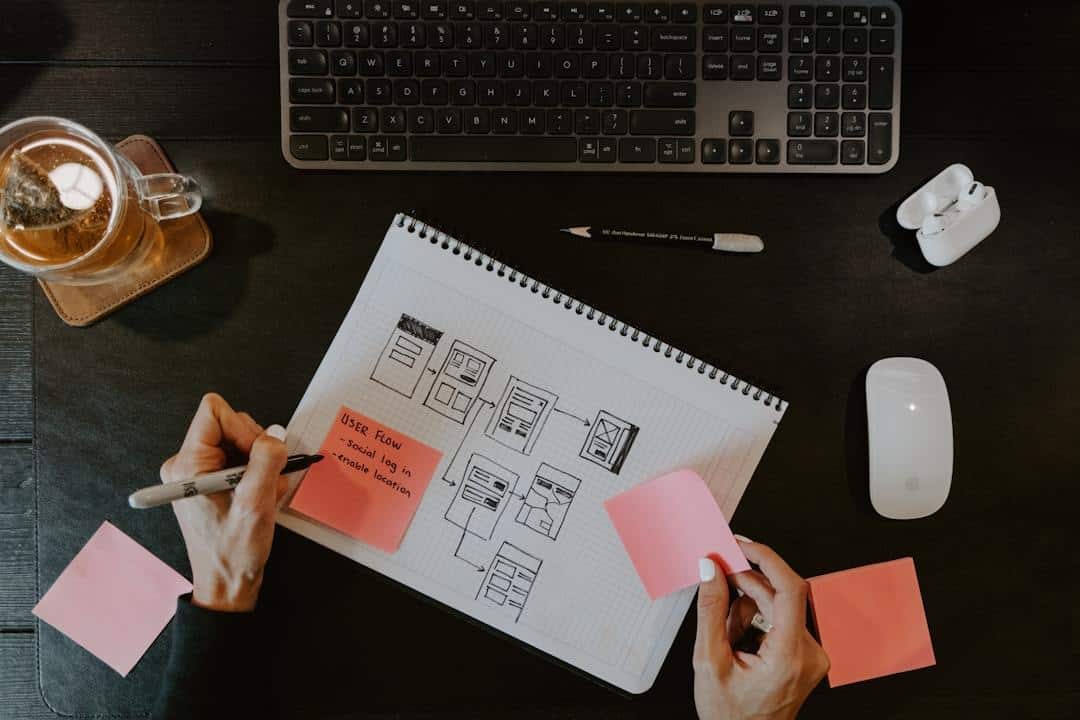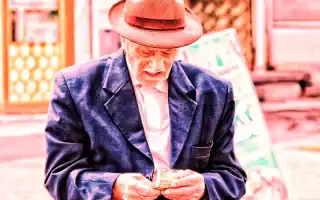Did you know that a graphic designer has a median salary of $74k per year, according to Glassdoor? Moreover, the US Bureau of Labor Statistics expected the graphic design field to grow by 3% in the next decade. These statistics are just some of the few that make this field attractive, so if you have design chops itching to get out, this is for you. If you need help figuring out how to start, this guide on how to become a graphic designer has your back!
From knowing the tools to building a killer portfolio that screams, “hire me!” this guide has it. Intrigued? Read on and discover how to land your dream graphic design job and join the ranks of this creative and in-demand field!
What Is Graphic Design?
Understanding what graphic design means is crucial on how to become a graphic designer. Talking about graphic design, it’s a creative process that combines art and technology to convey messages visually. This field involves the use of various elements such as typography, imagery, color theory, and layout techniques to create visual compositions for different media.
Remember that well-designed billboard that stopped you in your tracks? How about when you visited a user-friendly website that made your browsing much easier? Now, that’s what graphic design is all about—it’s everywhere.
These days, visual design is crucial, especially for businesses. Without great graphic design, the user experience on a site or any business platform will not be satisfying. Our initial reaction? Leave that site and find others with a smooth user experience.
Businesses don’t want this to happen since, without visitors to their sites, it’d be hard to attract potential customers. Hence, there’s a need for graphic designers.
What Is a Graphic Designer?
A graphic designer wears many hats. They’re part artist, part problem-solver, and part messenger. In a graphic design career, combining vibrant visuals, clever typography, and intuitive layouts is a must. You need to be able to convey complex ideas in a way that resonates with your client’s audience.
Effective design requires a deep understanding of the target audience. To truly resonate with their audience, designers need to balance creativity with technical skills and strong communication. You must also stay current with the latest design software and trends to remain competitive.
Role and Responsibilities
So, what does a day in the life of a professional graphic designer look like? It varies depending on the project, but some common tasks include:
Discussing client’s needs and goals
Researching online graphic design trends and gathering inspiration
Sketching out concepts and creating rough drafts
Bringing ideas to life through the use of design software
Collaborating with other graphic artists, freelance writers, and marketers
Presenting designs and revising based on feedback
Where Do Graphic Designers Work
From company design departments to ad agencies, you can find graphic designers working in a variety of settings. And with the rise of remote work, some designers even get to enjoy the comforts of home while collaborating with clients and team members.
A graphic design career requires teamwork to make the dream work. Although you can work independently, you still need to work closely with other creative design professionals to bring projects to life. Moreover, effective communication is vital to producing exceptional results.
How to Become a Graphic Designer
First things first, let’s talk education. While a degree in graphic design is a great way to learn the ropes, it’s not the only path to success. I’ve seen plenty of self-taught designers make a name for themselves through hard work and a killer portfolio.
In fact, you can learn how to become a graphic designer without a degree in this guide. I’ve broken down the journey into eight straightforward steps. Follow these, and have a successful career in graphic design.
Step 1: Be Creative
First and foremost, you’ve got to have creative skills or spark. You’ll need that because graphic design is all about thinking outside the box and coming up with fresh ideas that capture people’s attention.
But don’t worry if you don’t consider yourself an artistic genius—creativity is a muscle that can be strengthened with practice.
Take a moment to gaze at the world around you. Graphic designers understand that art, nature, or even the smallest everyday objects can spark inspiration.
That’s why some of the professional graphic designers I know carry sketchbooks. Others keep a digital note-taking app handy to jot down fleeting ideas and experiment with different concepts.
You can also use that as a way to develop skills that you’ll need in graphic design jobs. The more you apply your creative muscle, the stronger it’ll become, and who knows what amazing ideas will unfold.
Step 2: Become a Problem Solver
Design services aren’t just about making things look nice; it’s about tackling the tough stuff. When you’re a graphic designer, you’re part detective, part storyteller – and it’s your job to communicate ideas that resonate.
When tackling a design challenge, dissect it into smaller, bite-sized pieces. Start by asking yourself questions like “What’s the end goal?” and “Who’s the target audience?” to guide your approach. Then, feel free to brainstorm and test out different ideas – iterating on your designs until you land on the best solution.
Step 3: Know How to Use Various Graphic Design Tools
Have a design in mind? The digital world is now full of tools to bring your creative visions into stunning visuals. Some of them are:
Adobe Creative Suite
Adobe Photoshop
Illustrator
InDesign
These are just some of the popular graphic design tools you must know. If you’re thinking about the initial hurdle that discourages you – there are plenty of online resources and tutorials that can help you master the skills you need.
Find tutorials that let you experiment with different tools and techniques. Doing so allows you to develop your own style and voice.
But don’t forget the more innovative graphic design tools out there. With the popularity of artificial intelligence (AI), many designers create specialized designs in a snap. Yes, you read that right!
Graphic design takes time to finish using traditional graphic design software. That changed when AI surfaced; it took over some tedious graphic design jobs that may take hours to complete. Now, with the right prompt and graphic design program, you can create images or designs in minutes.
That’s why you need to be up-to-date on the innovations to keep your graphic design career thriving.
Step 4: Finish a Graphic Design Course
As mentioned, you can learn how to become a graphic designer even without a bachelor’s degree. Formal education isn’t the sole pathway to becoming a talented graphic designer, but taking a course can certainly provide a rock-solid foundation in design principles and cutting-edge techniques.
Sometimes, potential employers looking for long-term graphic designers want those who have finished a graphic design program. Thus, having one can make you stand out—you can even use your graphic design degree program to ask for a higher salary.
So, if you plan to upgrade your graphic design knowledge, look for programs that offer a dynamic mix of classes. Enrol in programs that include typography, color theory, and layout design. Even better if you can find programs accredited by trusted third parties.
And your graphic design skills develop if you have hands-on experience through internships or client projects, which are often part of many courses. This real-world exposure helps you build a solid portfolio and forge industry connections that can open doors to your graphic design career.
Step 5: Master the Fundamentals and Keep Learning
The foundation of your graphic design knowledge should contain the basics. That’s because designing with intent requires the need to understand the why behind the rules of color theory, typography, composition, and layout.
Memorization isn’t enough; you need to grasp the underlying principles to create designs that genuinely connect with people.
How? Well, start messing around with different color combos, font duos, and layout arrangements to see how they impact the vibe of your designs. And don’t be afraid to break the rules on purpose – it’s often where the most magic happens.
And, of course, that’s where the degree program in graphic design comes vital. When you take in programs in graphic design or UX design, you can learn the fundamentals before you start experimenting.
But finishing a degree doesn’t end there. Want to take your graphic design skills to new heights? Then, keep on learning. From classic tomes on the fundamentals of design to the latest publications on cutting-edge techniques, there’s a book out there that can help you achieve your goals.
I’m a big fan of classic design books like Robert Bringhurst’s “The Elements of Typographic Style” and Josef Müller-Brockmann’s “Grid Systems in Graphic Design.” Reading these design bibles can really help you grasp the underlying principles and philosophies that make great design work so well and even inspire you to push your own creative boundaries.
However, if you’re not a reader, that’s fine. These days, we can watch many tutorials or listen to podcasts about anything. Use these opportunities to keep upgrading your design skills.
Step 6: Build a Portfolio
Think you’re ready to help businesses reach their audience through graphic designs? Start building your portfolio.
Your graphic design portfolio is like a superhero cape—it gives you the power to save the day (or at least land your dream graphic design job). Make sure you showcase your strongest, most versatile work, which demonstrates your mastery of design principles.
For instance, if you’ve handled UX design projects or assisted a professional graphic designer, then add them to your portfolio.
And, of course, your potential clients may not believe that you’re into graphic design if your portfolio has a lousy user interface. Ensure that your portfolio is easy to navigate—talk about user interface—and clearly spells out your design process and problem-solving chops.
Doing so lets people know that you’re a professional graphic designer, even without you telling them so.
Step 7: Start Looking at Graphic Designer’s Job Postings
Now, to complete the guide on how to become a graphic designer, it’s time to hunt for a project. Scan the market for opportunities that marry your skills with your passions, whether that’s working for an agency, in-house at a company, or striking out on your own as a freelancer.
1. In-House Graphic Designers
Want to be the mastermind behind a company’s visual brand? Well, you can be if you’re an in-house graphic designer. This type of graphic designer allows you to craft everything from sleek marketing materials to product packaging that pops.
Not only that, but you’re also the ones who create eye-catching graphics for social media managers that drive engagement. That’s because you’re empowered to shape the company’s aesthetic and messaging across multiple platforms. You’re also the connective tissue between departments, working closely with marketing and product development to bring ideas to fruition.
Who wouldn’t love to be the creative force behind a brand’s visual identity?
2. Agency Graphic Designers
Now, for a more fast-paced and diverse type of graphic designer, you can choose to be an agency graphic designer. Here, you’ll work for design firms that take on clients from a variety of industries.
The best about it? You could be working on a branding project for a tech startup one day and a packaging design for a food company the next.
If you relish a fast-paced environment of agency work, variety is the spice you’re looking for—one you can find as an agency graphic designer.
There’s more to it! Teaming up with other creative minds exposes you to diverse skill sets and innovative thinking. However, meeting tight deadlines and juggling multiple projects simultaneously can be overwhelming at times.
3. Freelance Graphic Designers
If you want to control the projects without someone managing you, freelance graphic design is most suitable for you. As a freelance graphic designer, you’re the captain of your own ship. You get to choose your clients, projects, and pace – perfect if you crave freedom and flexibility in your creative pursuits.
The advantage? Pursue the projects that set your heart racing and partner with clients who resonate with your creative frequency. That said, this freedom isn’t without its price: finding clients, micromanaging projects, and wrangling finances fall squarely on your shoulders.
But when you succeed, the sense of fulfillment is hard to match. Especially if you have good time management skills, freelancing may be perfect for you.
Or you can even land your dream design gig with a simple connection. Attend industry events, join online forums, and don’t be shy about reaching out to designers you admire for advice or a valuable intro.
And hey, your first job isn’t a lifelong commitment, so don’t stress if it’s not a perfect fit. What matters most is you’ve decided to apply your knowledge.
And the best part? The world of graphic design is full of exciting possibilities.
How To Become a Freelance Graphic Designer
So, you’re thinking about jumping to freelance graphic design or sell digital graphic media? No worries, I’ve searched and compiled the approaches of graphic designers who’ve been in the game for a long time.
1. Learn Graphic Design and the Business Structure
Yes, that’s mentioned above. This is vital because mastering graphic design requires more than talent—it demands a solid foundation in the basics. From color theory to typography, invest time in learning the fundamentals.
However, don’t stop on graphic design theory. Get hands-on experience with various design software to develop your style and find your voice.
Moreover, as a freelancer, you’re not just a designer; you’re a business owner.
Brush up on the financial side of things – think pricing strategies, contracts, invoicing, and taxes. The more you know, the better equipped you’ll be to succeed. Don’t hesitate to seek guidance from fellow freelancers or industry experts.
With the correct budget management, you can ensure that you have a steady cash flow.
2. Let Your Brand Shine
As a freelancer, you’re the CEO of your own personal brand. To get noticed, craft a strong visual identity that screams “you” and use it to tell a story that potential clients can’t ignore.
A killer website, social media presence, and some good old-fashioned networking can get you in front of the right people.
3. Find Clients
Finding clients is the lifeblood of freelancing. So, tap into your network – personal and professional – and don’t be shy about pitching to companies or individuals you admire.
And as we’ve mentioned above, you can also hunt for gigs on freelance job boards or marketplaces. Remember, it’s normal to get rejections, what’s not is to stop when you didn’t persist well.
4. Overdeliver on Your First Projects
When you land those first few clients, it’s time to wow them with your work—the secret of how to become a graphic designer who earns more than the median salary.
Go above and beyond to deliver designs that exceed their expectations and communicate clearly and professionally throughout the process. Satisfied clients are more likely to come back for repeat business or refer you to others.
Plus, those early projects will be crucial when creating a portfolio and establishing your reputation as a freelancer.
Freelance graphic design is a career path that’s not for the faint of heart. It demands tenacity, creativity, and a willingness to push yourself outside of your comfort zone continuously. But for those who are up for the challenge, the payoff can be a truly fulfilling career that brings a sense of purpose and excitement.
Graphic design is about using creativity and technical skills to communicate ideas visually. Designers craft everything from logos to websites, solving problems and thinking strategically.
Conclusion
So there you have it—a roadmap for how to become a graphic designer. It’s not an easy journey, but with hard work and dedication, you can turn your love of design into a fulfilling career.
Becoming a skilled graphic designer requires more than just creating visually appealing images. It’s about using your skills to solve real problems, convey important messages, and continuously develop your expertise.
Whether you choose to work for a company or hit the ground running as a freelancer, always strive to deliver your best work and never stop learning. With the right mindset and a commitment to your craft, you can achieve great things in the world of graphic design.
FAQs
What do you need to be a graphic designer?
You need creativity, design skills, and proficiency with tools like Adobe Illustrator and Photoshop. A solid portfolio helps, too.
How to start a career in graphic design?
Start by learning essential design principles. Enroll in courses, build a strong portfolio, and network with industry professionals.
Can I do graphic design without a degree?
Yes, many successful designers are self-taught or attend short-term programs instead of getting bachelor’s degrees.
Can I learn graphic design on my own?
You can absolutely teach yourself through online resources, tutorials, books on communication designers, and practice projects. You can also use our guide on how to become a graphic designer!






